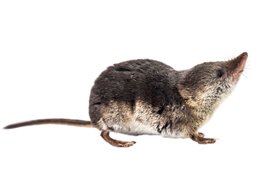
What Is the Difference Between Moles and Shrews?
Moles and shrews are digging animals that often appear in yards. Both are insectivores, but there are differences that distinguish these two pests from one another.
Shrew vs. Mole Feeding Habits
Moles mainly create underground tunnels to feed. On the other hand, shrews scavenge on the surface of lawns. While they can dig their own holes, these pests also use other animals’ tunnels to find insects.
Shrew and Mole Appearance
Both moles and shrews have dark fur, rounded bodies, and long, pointed snouts. However, moles tend to be bigger than shrews and have large forefeet that turn outward to make digging easier. Their ears and eyes are tiny and often not visible through their fur.
Shrews have smaller feet than moles, and most species have tiny but visible eyes and ears. People are also more likely to actually see a shrew than a mole, as shrews spend more time out of their tunnels.
Shrew vs. Mole Damage
If large ridges appear in the lawn, the culprit is likely a mole. Holes in lawns about one inch wide may belong to shrews. Like most wild animals, both moles and shrews can bite and will defend themselves if they feel threatened.
While neither pest is aggressive, territorial shrews may come into conflict with dogs or cats in yards. Since some shrew species produce venom, bites can be more painful than those of mice or other animals their size.
Getting Rid of Moles and Shrews
Homeowners can remedy mole problems by placing traps underground. To remove shrews, use common rodent-proofing methods like sealing gaps and cracks around homes or removing food sources. Keep in mind that many mouse traps don’t work with shrews because the pests are light enough to not trigger the trap.
These differences in shrew vs. mole control mean that identifying the wildlife problem correctly is important. Contact the specialists at Critter Control for help with identifying and removing shrews or moles from the yard.